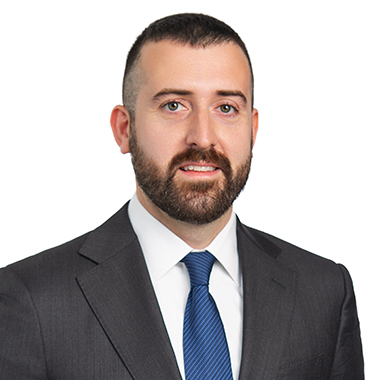Expedited Patent Examination Program for Semiconductor Innovations Announced by the USPTO
The U.S. Patent and Trademark Office (USPTO) recently announced a new program that expedites the examination of patent applications directed to semiconductor innovations. Coined the Semiconductor Technology Pilot Program, the program enables qualifying patent applications to be granted special status and examined on an expedited basis until a first office action issues. The program will run until the earliest of December 2, 2024 or the date by which a total of 1,000 applications have been accepted into the program. Businesses innovating in semiconductor fields should consider using this program as a tool to enhance construction of their patent portfolios.
I. Policy Basis
Signed into law in August 2022, the Creating Helpful Incentives to Produce Semiconductors (CHIPS) Act of 2022 provides funding intended to strengthen American semiconductor research, development, and production. The Biden administration also issued Executive Order 14080 in August 2022, which is directed to implementation of the Act. According to the USPTO, the Semiconductor Technology Pilot Program is intended to support and align with both. Specifically, the program is intended to encourage research, development, and innovation in semiconductor manufacturing, and provide intellectual property protection that incentivizes investment in this area. Innovations that increase semiconductor device production, reduce semiconductor manufacturing costs, and strengthen the semiconductor supply chain are targeted in particular.
II. Program Requirements
A patent applicant seeking to use the program must meet certain requirements, the most notable of which are explained below.1
The patent application at issue must either be (1) a non-continuing, original utility nonprovisional application, or (2) an original utility nonprovisional application that claims the benefit of the filing date under 35 U.S.C. §§ 120, 121, 365(c), or 386(c) of only one prior application that is either a nonprovisional application or an international application designating the United States. The USPTO has noted that applications claiming the benefit of one or more provisional patent applications under 35 U.S.C. § 119(e), or claiming priority to one or more foreign applications under 35 U.S.C. § 119(a)-(d) or (f), will be eligible for the program. The application must also have been filed electronically using the USPTO’s Patent Center system, with the specification, claims, and abstract filed in the DOCX format.
At least one claim of the application must cover a process or apparatus for manufacturing a semiconductor device and correspond to one or more technical concepts within class H10 of the cooperative patent classification (CPC) system, which relates to “Semiconductor Devices” and “Electronic Solid-State Devices Not Otherwise Provided For,” or class H01L, which relates to “Semiconductor Devices Not Covered by Class H10.”
Additionally, the application at issue must not be subject to a nonpublication request; any previously submitted nonpublication request must be withdrawn before entry into the program. The application also must contain no more than three independent claims and 20 total claims, and cannot include multiple dependent claims. During the remainder of prosecution, amendments that add claims to exceed these limits or add multiple dependent claims are not permitted. Moreover, an applicant cannot cancel all of the claims during prosecution that provided a basis for entry into the program—i.e., all the claims that cover a process or apparatus for manufacturing a semiconductor device and correspond to one or more technical concepts within classes H10 or H01L.
To request entry into the program, an applicant must submit a petition to make special when the patent application is filed or within 30 days of the filing date. No petition fee is required, nor must the applicant meet any requirements of the accelerated examination program or prioritized examination (Track One) program—other mechanisms offered by the USPTO to quicken examination. The petition must certify that:
- The applicant has a good faith belief that the claimed invention(s) meeting the technology requirement of the pilot program improves the manufacturing of semiconductor devices;
- The process or apparatus covered by the claimed invention(s) meeting the technology requirement of the pilot program is disclosed in the specification as being primarily focused on the manufacturing of semiconductor devices;
- The applicant has a good faith belief that expediting examination of the application will have a positive impact on the semiconductor manufacturing industry, such as increasing semiconductor device production, lowering semiconductor manufacturing costs, or increasing the resilience of the semiconductor supply chain; and
- The inventor or any joint inventor has not been named as the inventor or a joint inventor on more than four other nonprovisional applications in which a petition to make special under this pilot program has been filed.
III. Practical Impact
While the program only expedites issuance of a first office action, application pendency may still be dramatically reduced. As of writing, according to the USPTO’s Patents Dashboard, first office actions take approximately 21 months to issue in regular applications. In contrast, under the USPTO’s Track One expedited program, first office actions issue approximately three months after a Track One petition for expedited examination is filed. Assuming applications under the Semiconductor Technology Pilot Program proceed similarly to Track One, applicants would benefit from receiving incredibly fast patentability decisions which, if favorable, would allow them to quickly add to their patent portfolios.
